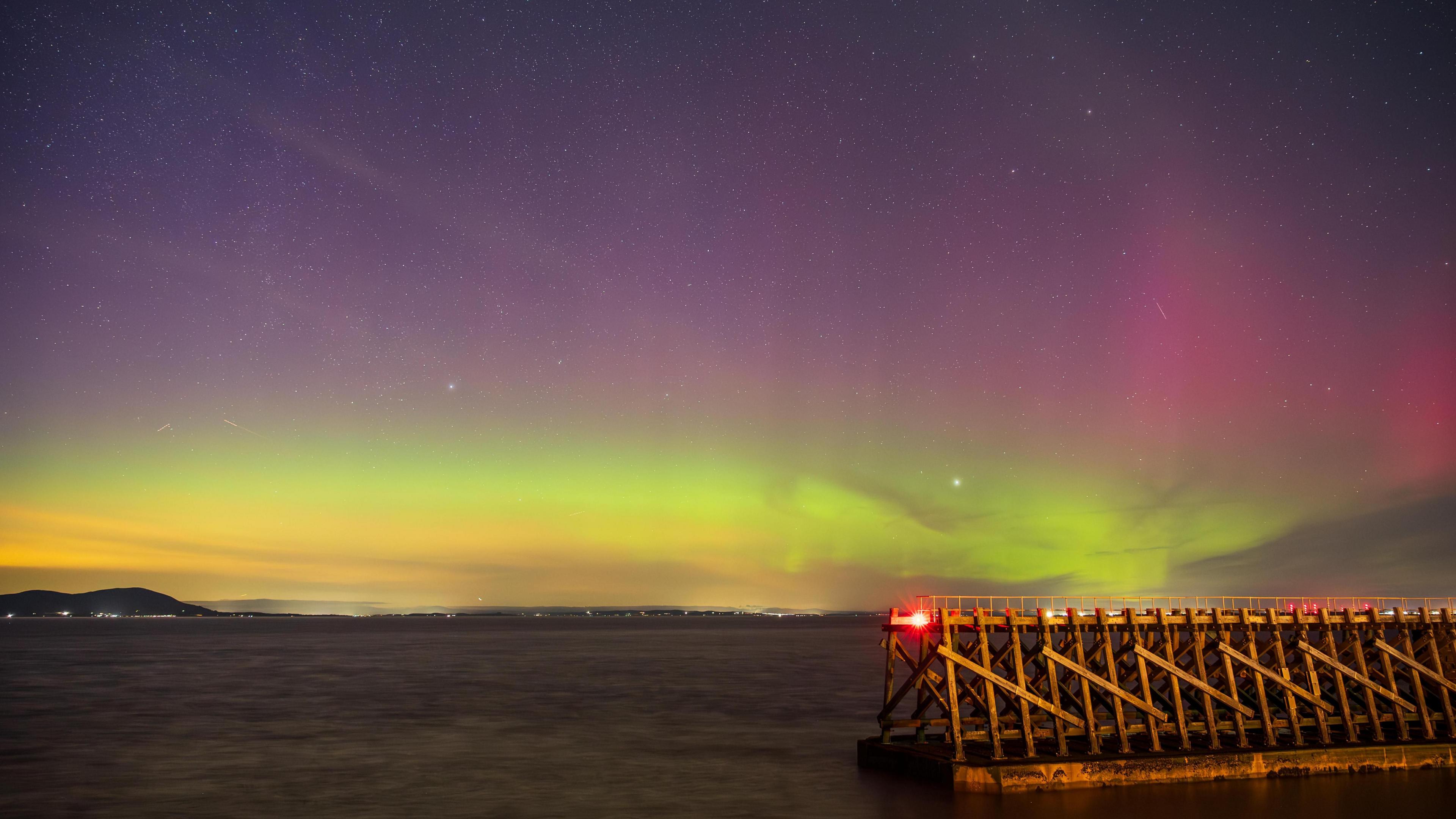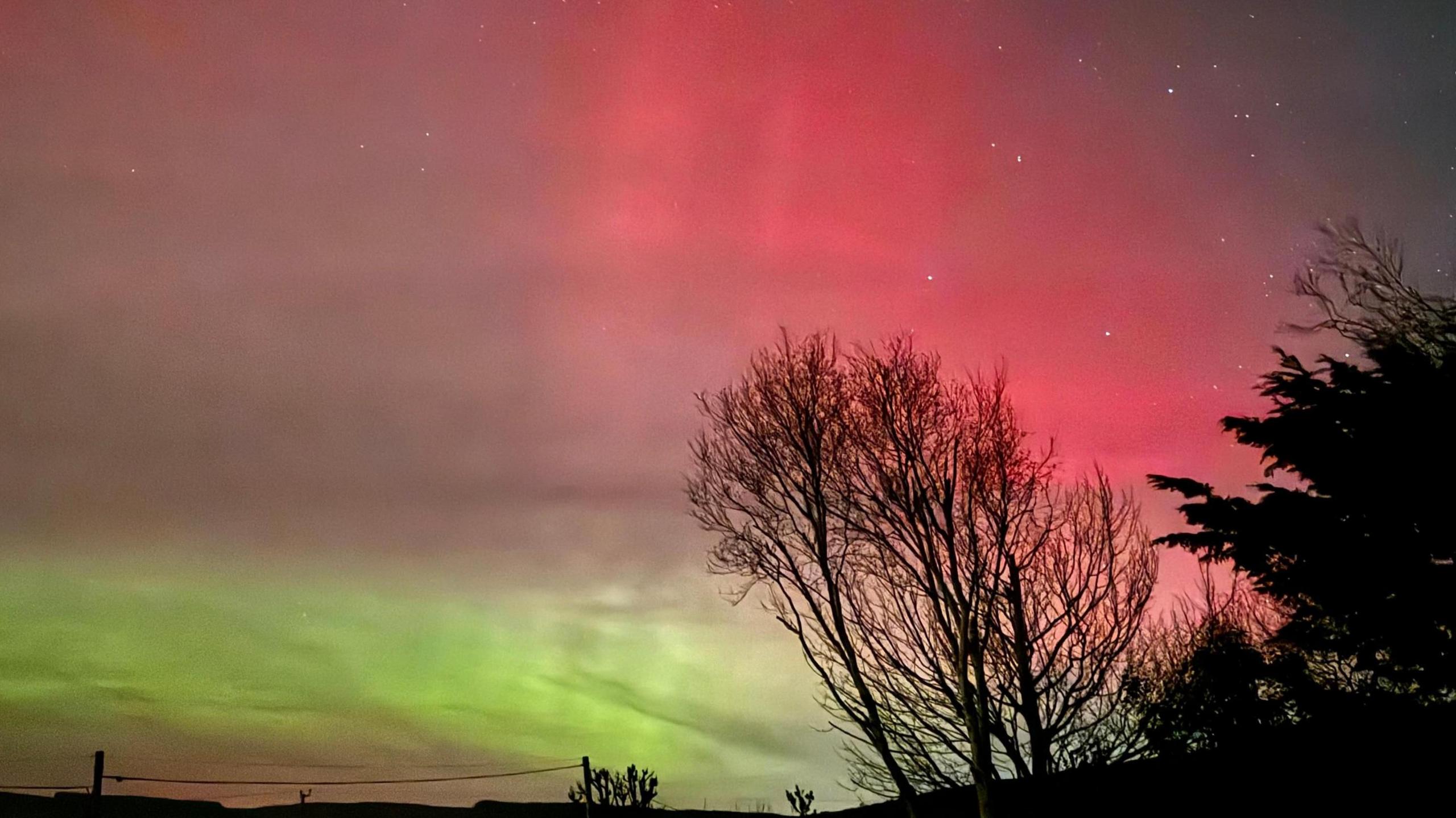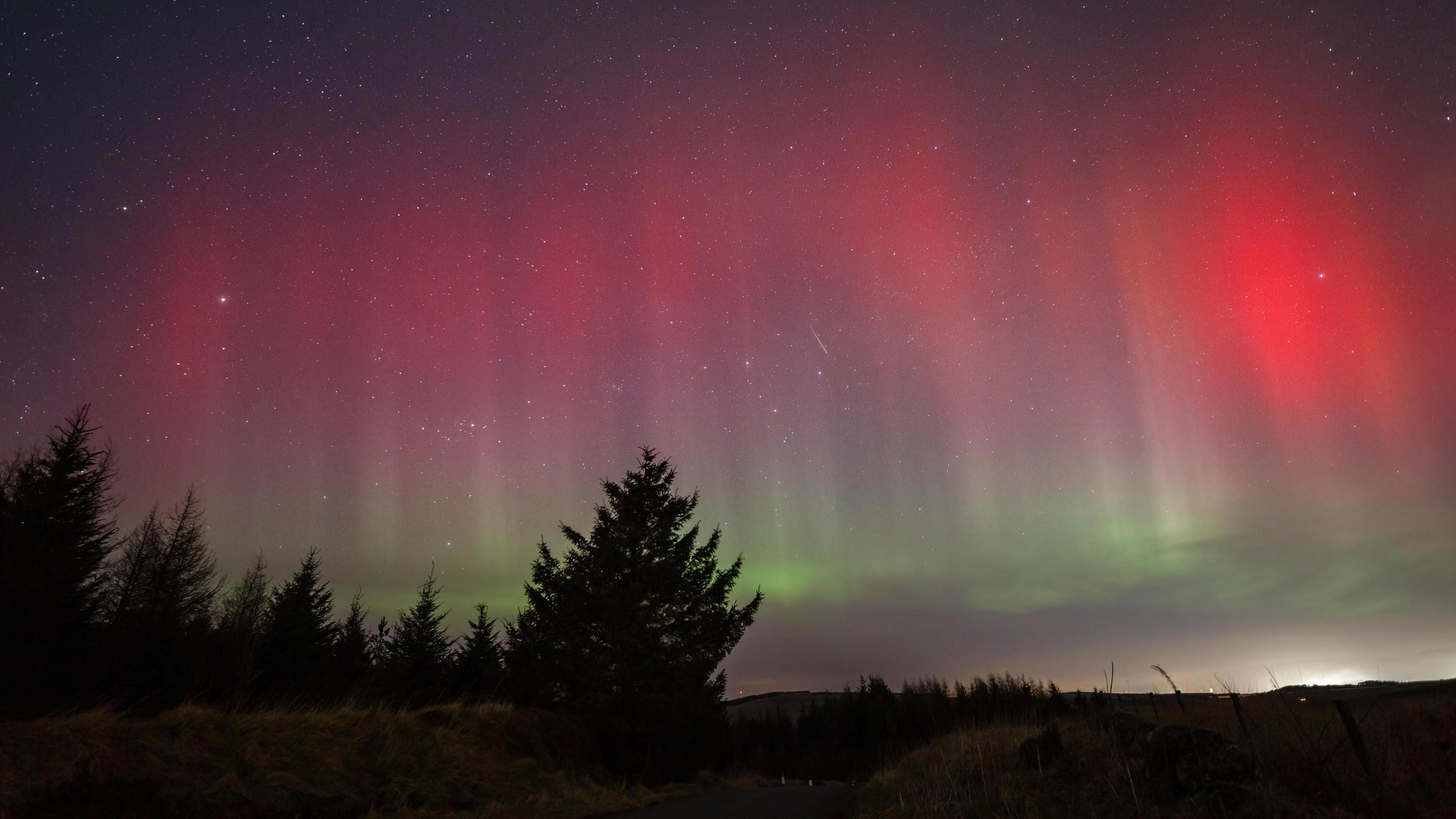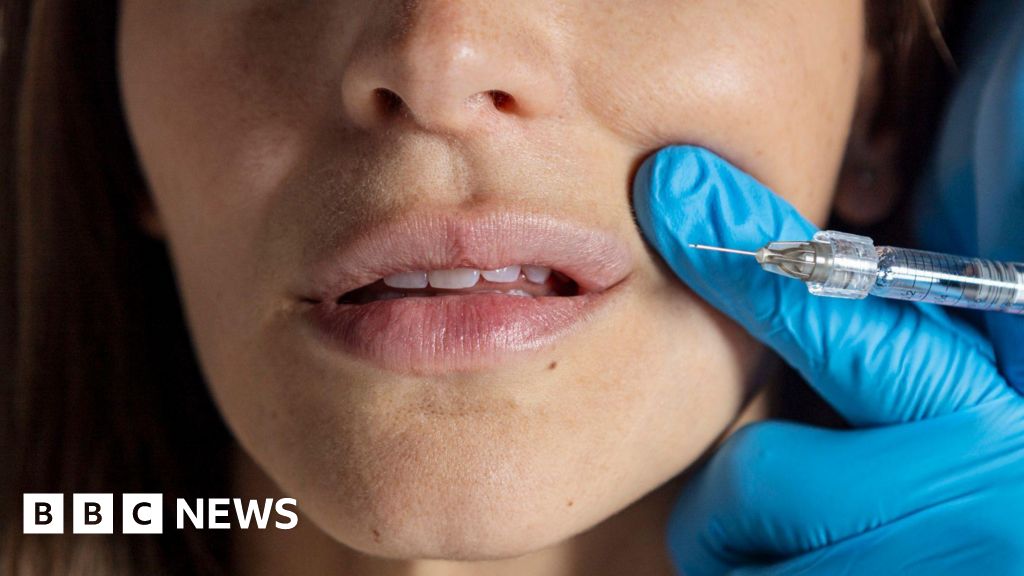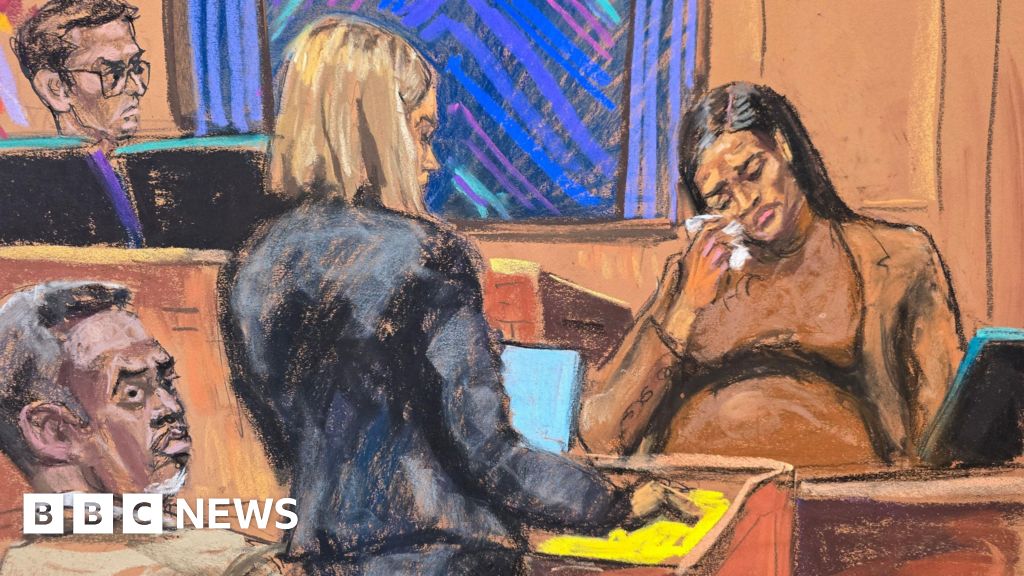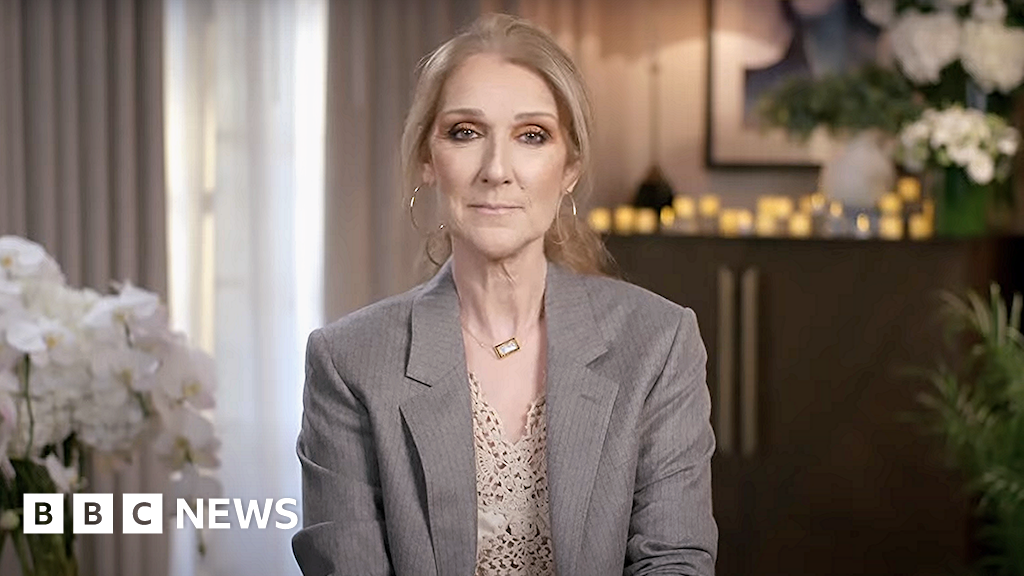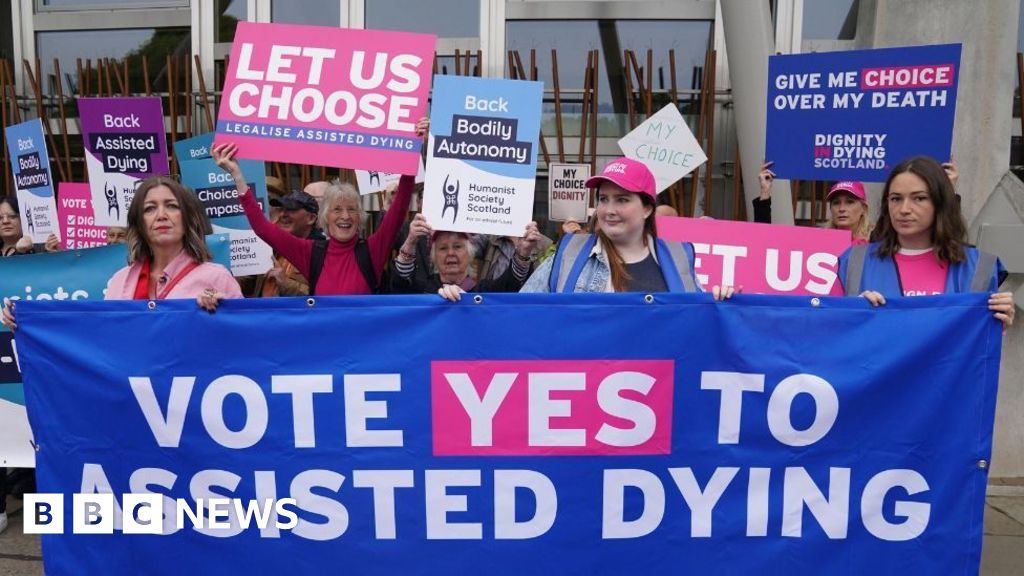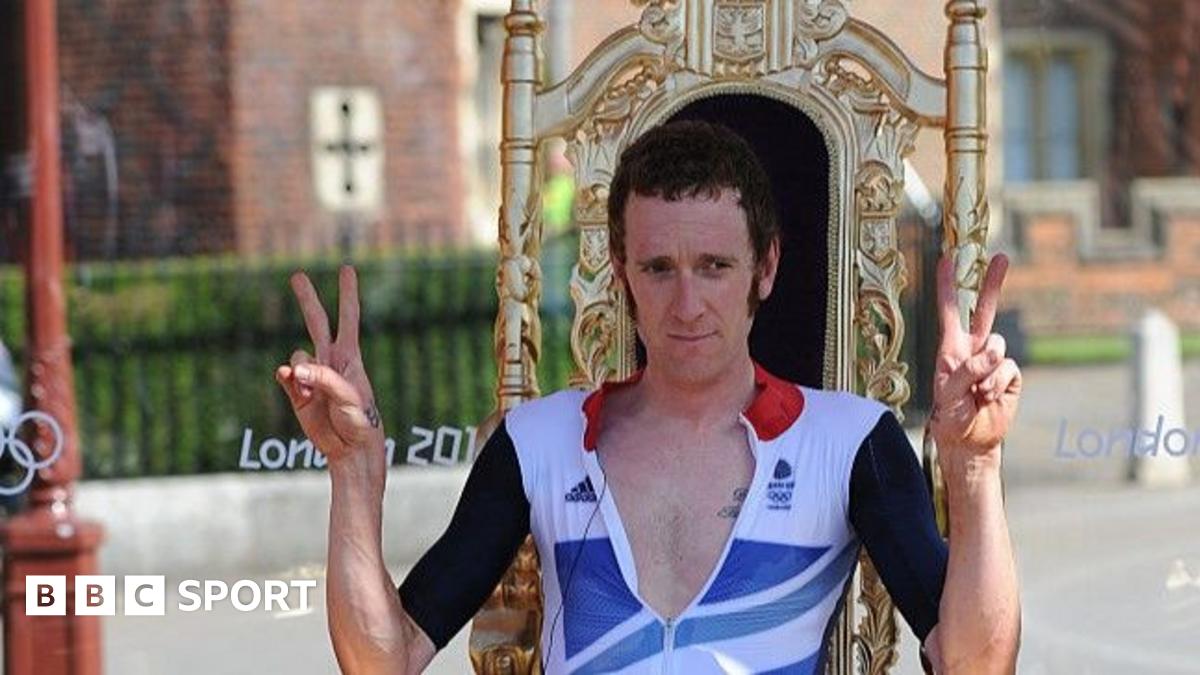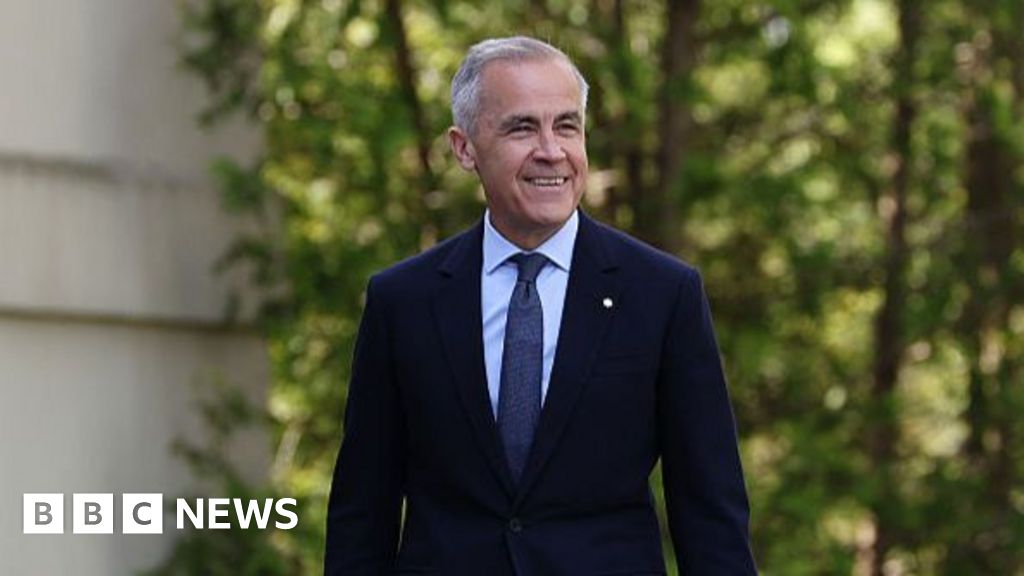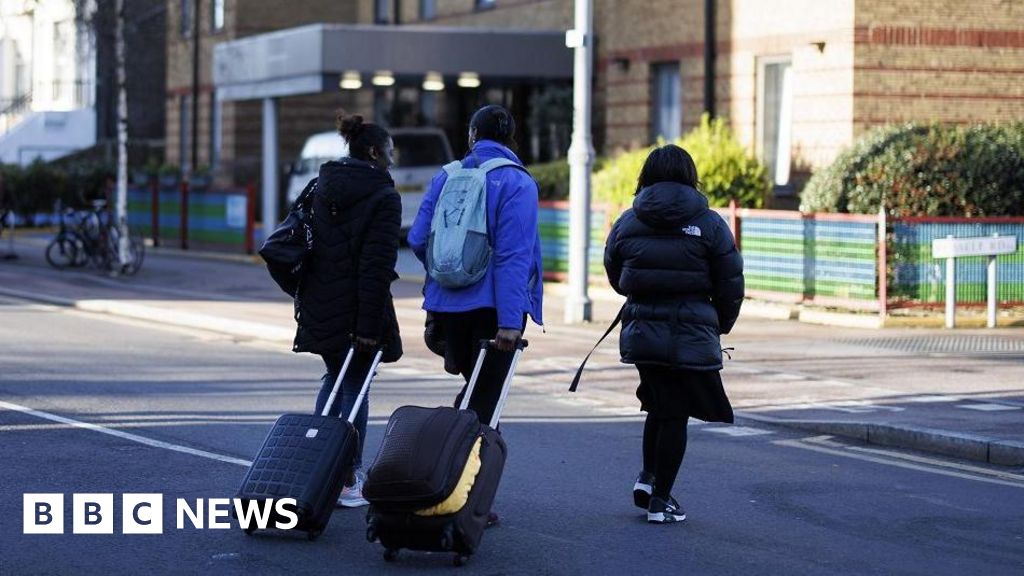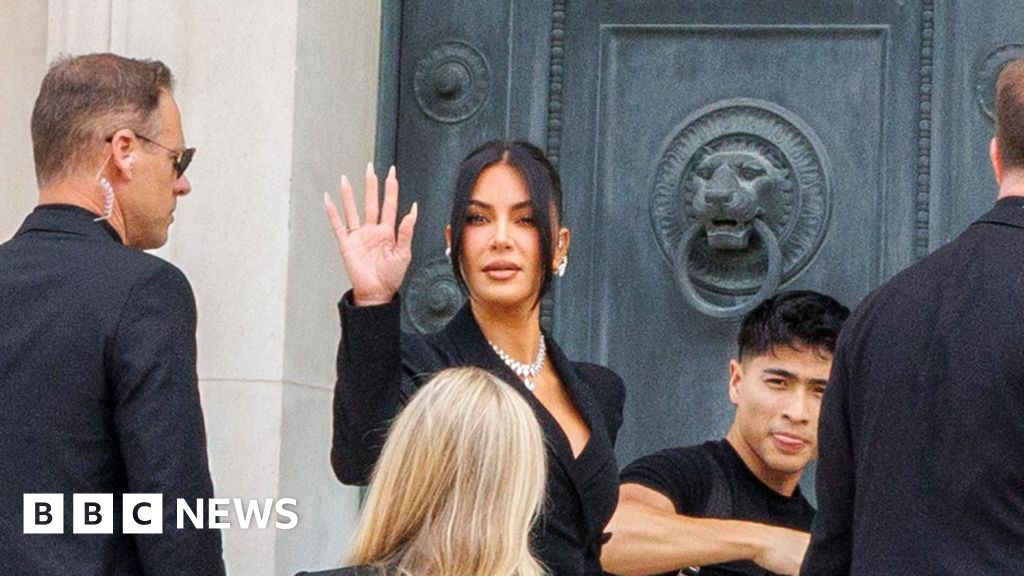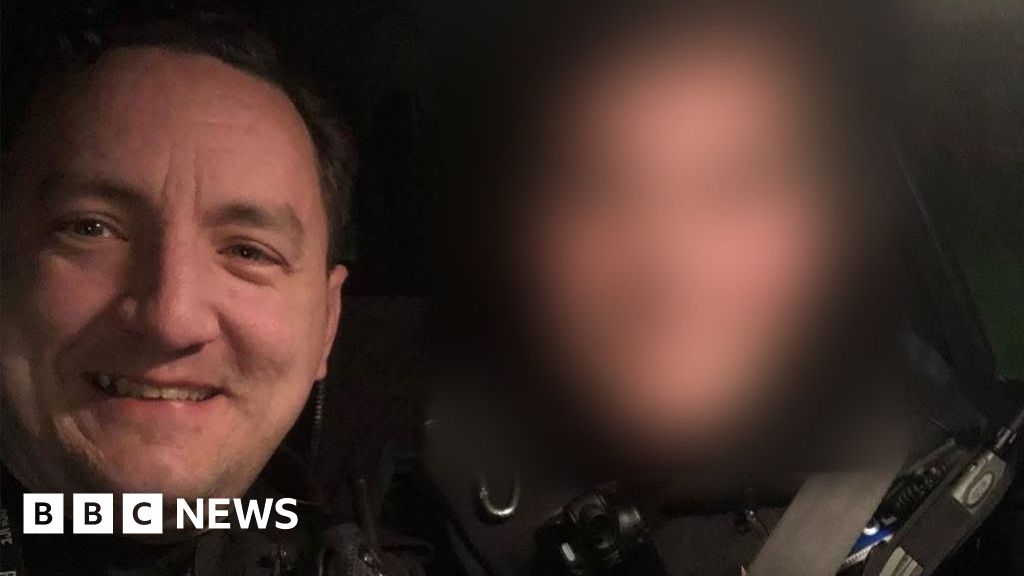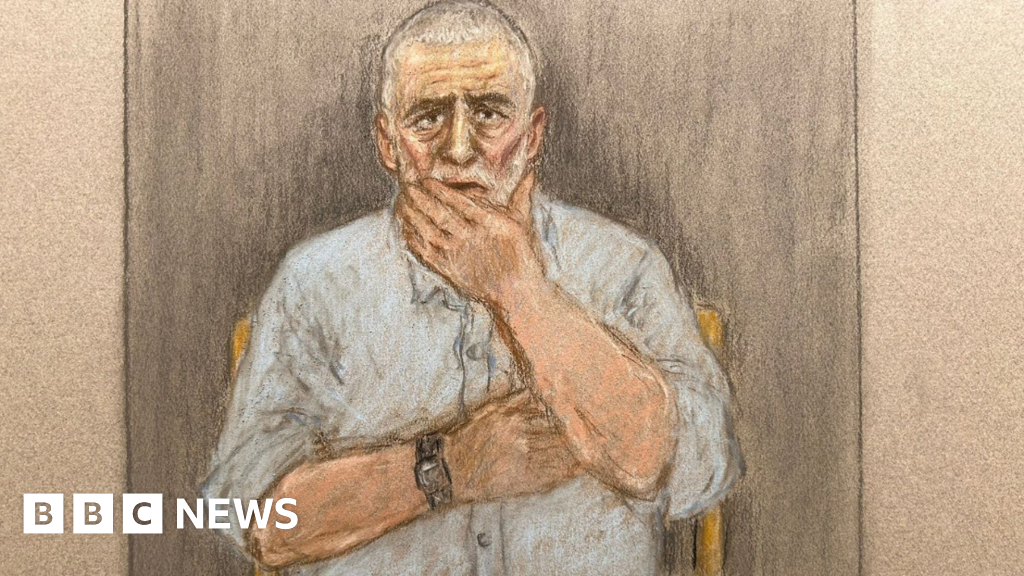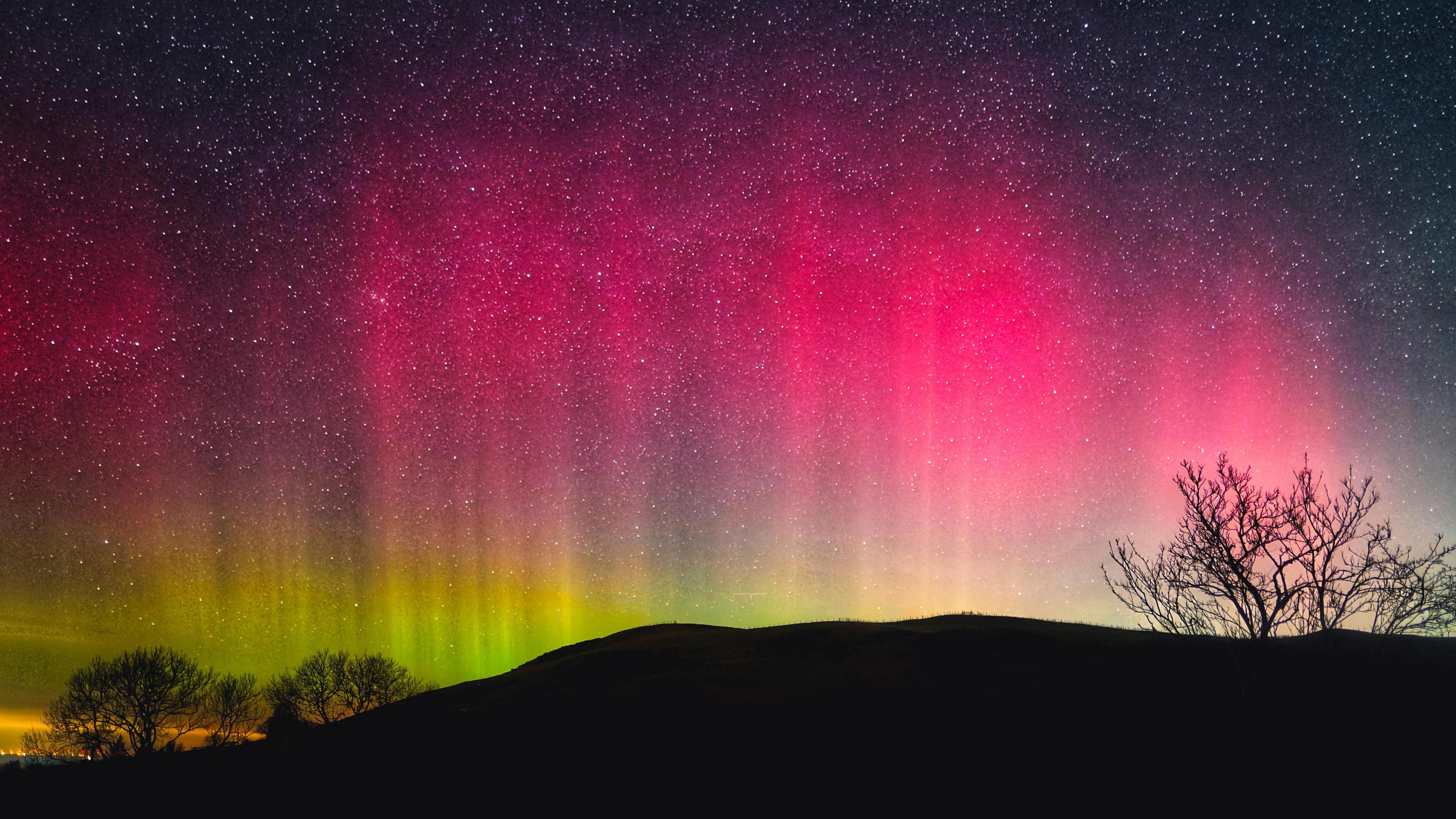 Image source, BBC Weather Watchers / Ruth Davies
Image source, BBC Weather Watchers / Ruth Davies
Vivid colours of the Northern Lights seen in Denbighshire on Tuesday night.
Simon King
Lead Weather Presenter
The Northern Lights - or aurora - lit up the skies across the United Kingdom on Tuesday night.
While sightings are more common in northern parts of the UK, over the last week the spectacular display has even been seen in southern England.
We've seen a combination of high solar activity and an effect that happens around the equinox that can boost the energy needed for aurora.
The effect known as 'Russell-McPherron' is down to the alignment of the Sun and Earth around the spring and autumn equinox and means that you are twice as likely to see the aurora at these times of year.
- Image caption,
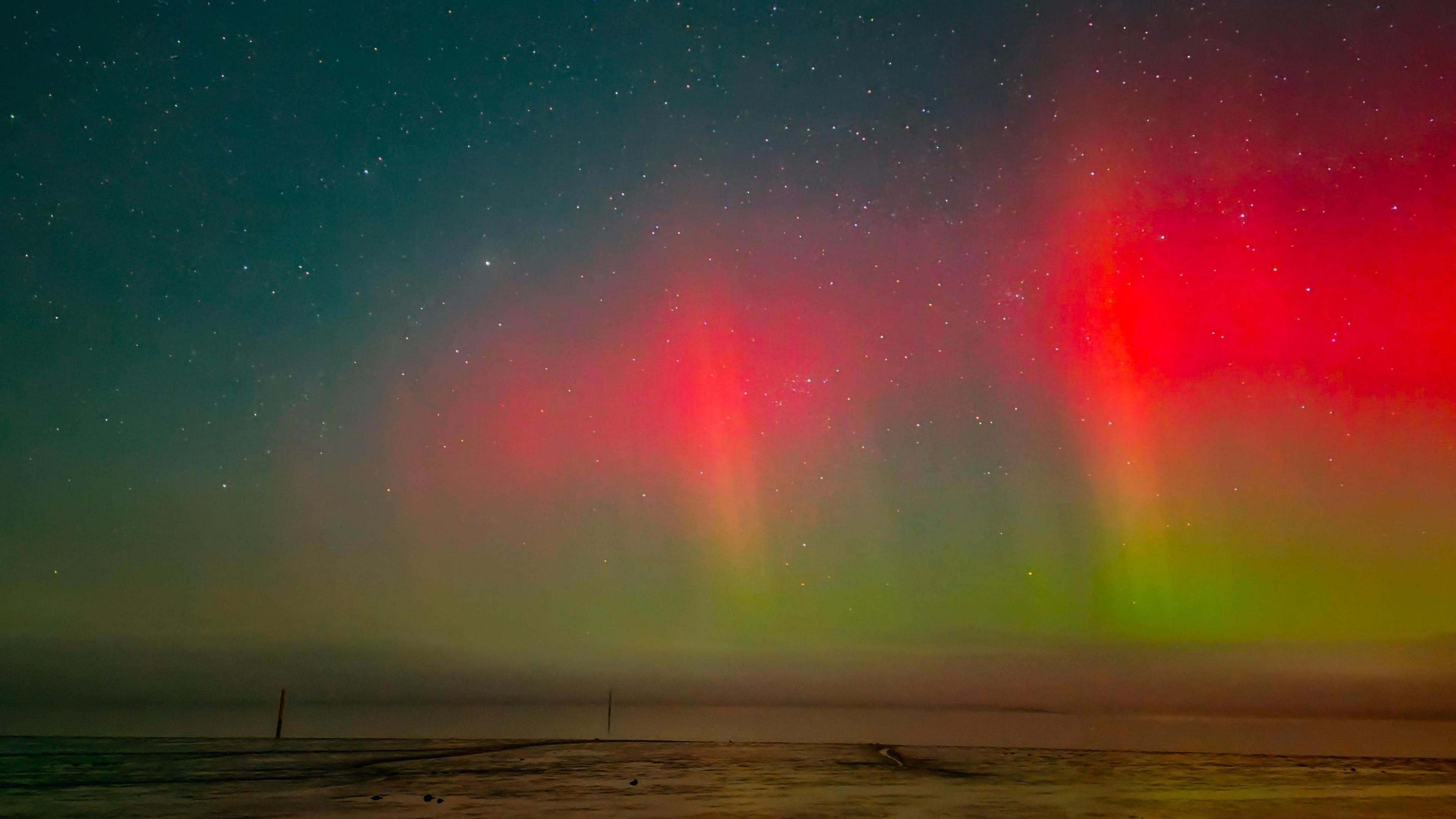
Image source, BBC Weather Watchers / Simon Luckman 1988
Northern Lights were spotted unusually far south in Great Yarmouth, Norfolk on Tuesday night
Vivid red and purple colours of the aurora were seen in Tuesday night in northern Scotland, across Northern Ireland and as far south in England as Norfolk.
Amber alerts, indicating an increase in the solar energy heading to Earth were issued from AuroraWatchUK, based at Lancaster University in the early hours of Wednesday morning.
Experts suggest there may be another good opportunity to see the aurora again on Wednesday night and in the coming nights.
What causes the Northern Lights
The Sun is currently at a "maximum" in its 11-year solar cycle.
This means there are lots of sunspots on the surface which are a bit like volcanoes and occasionally erupt. These are known as Coronal Mass Ejections (CME's) and release extra material and energy out in to space.
If directed towards Earth, our magnetic field pulls the energy into our atmosphere at the poles.
Once the energy is in our atmosphere, reactions with oxygen and nitrogen then bring the colours we associate with the aurora.
The aurora is always present around the North and South Poles - this is known as the auroral ring.
You'll need these increases in solar energy, such as a moderate to severe geomagnetic storm for the ring to grow and expand to lower latitudes such as the UK.
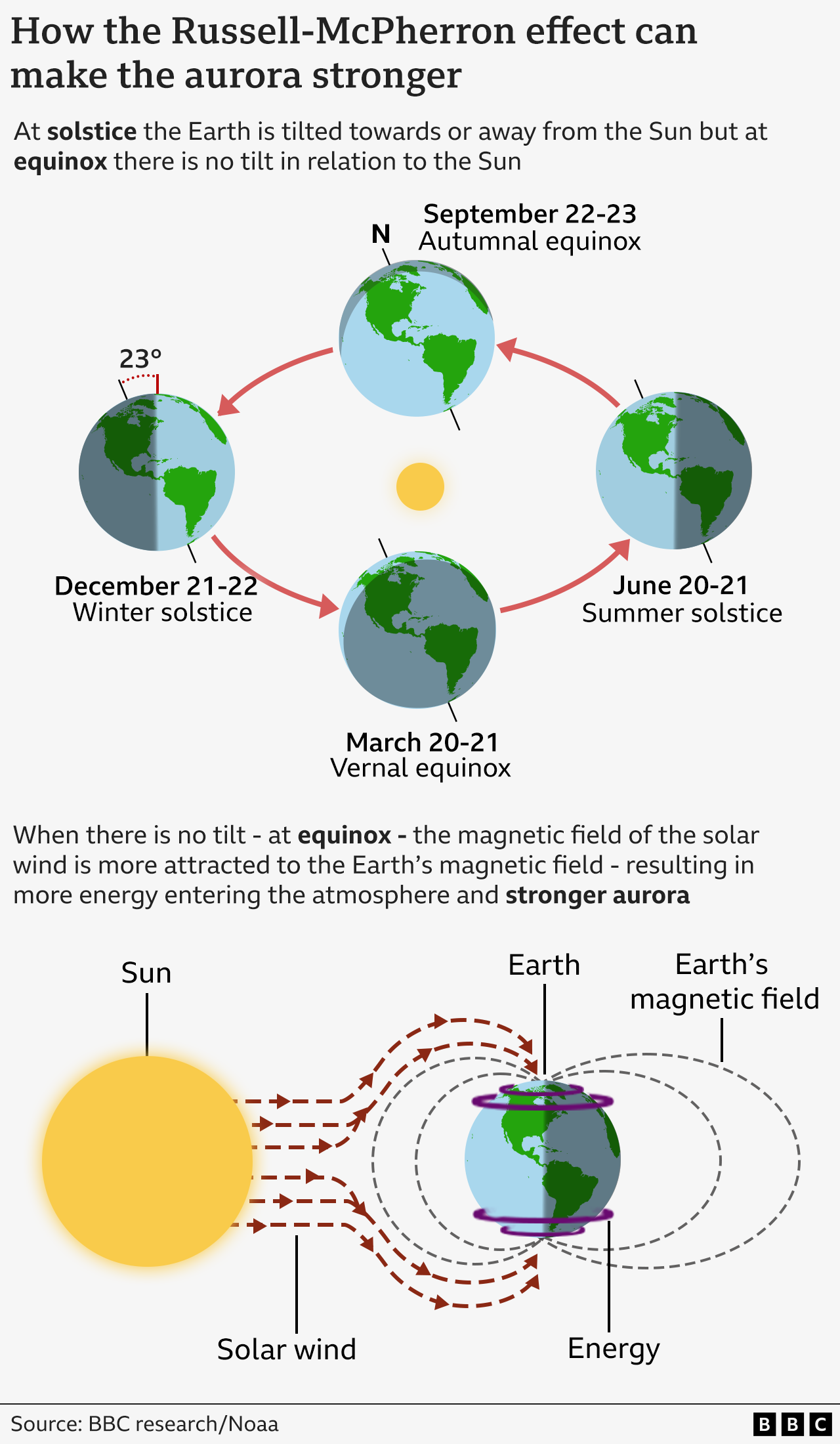
Russell-McPherron effect
For a few weeks now beyond the spring equinox - marked on 20 March this year - there is evidence of an enhancement to the aurora.
Professor Mike Lockwood, president of the Royal Astronomical Society told BBC Weather that "your chances of seeing aurora at low latitudes is enhanced at the equinoxes because of the Russell-McPherron effect".
Earth is tilted on an axis of 23.5 degrees. On its orbit around the Sun, that tilt is either towards or away from the Sun at the solstices - which in the northern hemisphere is summer and winter respectively.
At the equinoxes in March and September, Earth is neither tilted towards or away from the Sun in relation to its axis.
This varying Sun-Earth alignment throughout the year results in differences to the amount of solar energy that interacts with Earth's magnetic field and therefore changes the strength of aurora.
As the solar wind - the stream of energy and particles which have their own magnetic field - interacts with Earth's magnetic field, a process called magnetic reconnection occurs.
Imagine tiny bar magnets travelling through space that are in the correct north to south orientation so they are attracted to Earth's magnetic field.
"This reconnection process that lets the energy into Earth's environment and powers the aurora [facilitated at the equinox] means you get this extra coupling of energy" said Prof Lockwood.
This leads to stronger aurora compared to summer and winter when the alignment is less favourable.
Having the extra energy of an Earth-directed Coronal Mass Ejection and geomagnetic storm will increase chances even more.
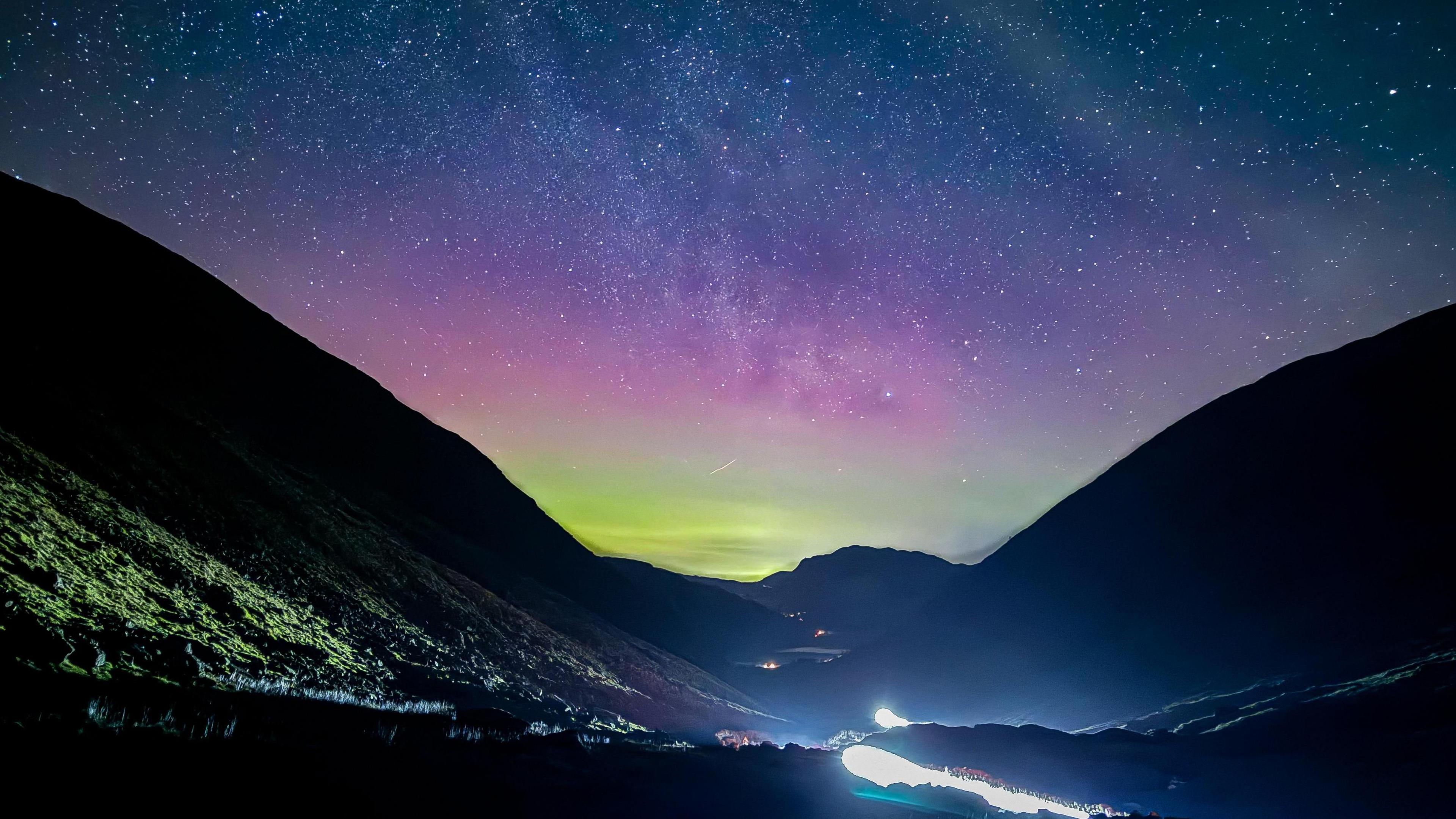 Image source, BBC Weather Watchers / The Roaming Hind
Image source, BBC Weather Watchers / The Roaming Hind
Aurora in Ambleside, Cumbria on Tuesday night
Vintage years for aurora
With lots of geomagnetic storms, the last 12 months have been a pretty special time to see the aurora.
Prof Lockwood believes that "in the top ten [aurora] events in terms of how far equator-ward they got, three of them were last year (2024)".
Though he admits comparing reports from recent years has got easier due to mobile phone and digital cameras being more sensitive to capturing the aurora than the naked eye.
But he went on to say that no-one is denying 2024 was "a very very significant year for aurora".
May 2024 was especially significant, with Nasa suggesting Earth experienced the strongest geomagnetic storm in two decades - and was possibly among the strongest displays of aurora on record in the past 500 years.
With solar activity remaining high throughout 2025, there should still be many more opportunities to see the Northern Lights before activity starts to decrease towards the next solar minimum around 2030.

 1 month ago
50
1 month ago
50
